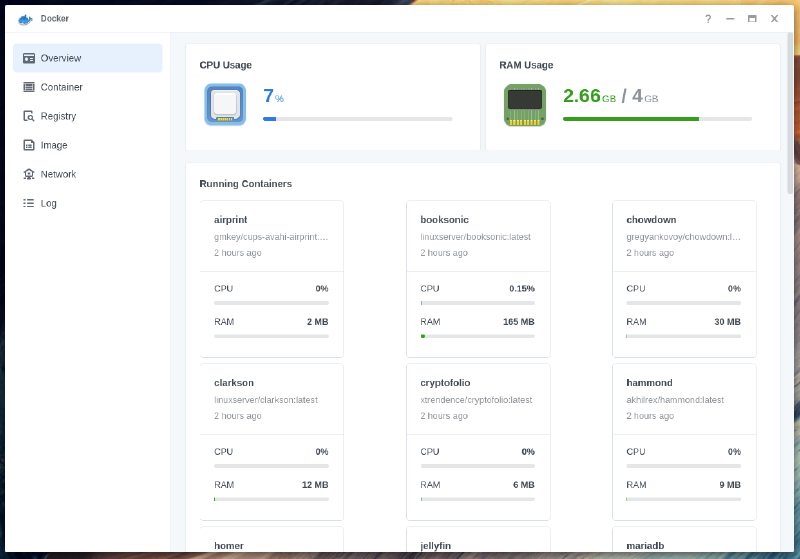Overview
Personally, I think the Synology DSM Docker implementation is awesome. It’s the UI that I wish Docker Desktop on macOS was (with a few tweaks).
It’s a super simple interface to use if you are new to Docker. However, if you are new to Docker, it can be a little confusing to work out how to update a container/image.
Here I’ll outline the steps I use (mostly for myself so I don’t forget!) to update the containers you have running on your Synology.
For reference I was originally running DSM 6.x when I wrote this, but these same steps have since worked successfully on DSM 7.x
Steps
- Login to your Synology DSM web interface
- Open Docker
- Find the container you want to update in the ‘Container’ tab and note the name of the image
(e.g.linuxserver/booksonic) - Click on the ‘Registry’ tab and search for the image you noted in Step 3.
- Double click the image and download the ’latest’ using the popup.
- Once the download is complete, in the ‘Container’ tab, stop the original container from Step 3.
- Edit the name of the container to include something new, like “-backup”
(e.g.booksonic-backup). - Right click the container and choose “Settings > Duplicate settings”. Pick a name for the new container (you can use the original name, e.g.
booksonic). This will create a new container using the new (latest) Docker image. - Start the new container and verify that the application functions as expected.
You will note that if you specified a port in the orignal container config, since it is “in use” Docker will pick a random port to use - View the config by viewing the details of the running container to find this.
- Once you are happy, you can remove the "-backup" container.
- You will need to specify a port in the new container config if you were using one previously. If something goes wrong, you can revert to the "-backup" container.
